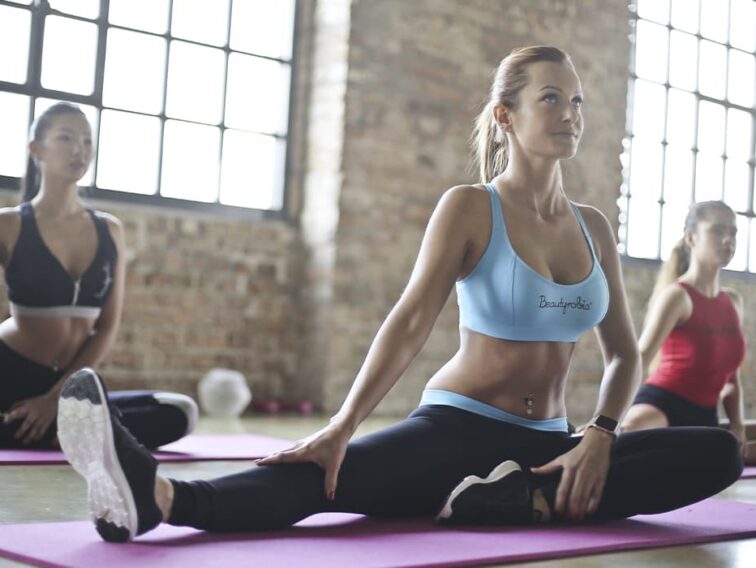Endometriosis occurs in 10% of women of reproductive age, i.e. in approximately one hundred and eighty million women worldwide. It is not well known and rarely spoken about. Treatment for each patient with endometriosis is selected by the doctor individually. But the methods of prevention and relief of symptoms in most cases are universal.
Endometriosis
In the book “Endometriosis”, one of the leading Spanish gynecologists Francisco Carmona, you will find a detailed explanation of what endometriosis is, how it manifests itself and what it can lead to. Selected dietary recommendations and exercises to help you feel better.
What can you eat?
Adequate nutrition is the foundation of good health for any person and in any situation. It is also extremely important in the fight against a chronic disease such as endometriosis, in which the characteristics of the diet can reduce the severity of symptoms.
At this moment there is no scientific evidence to say with certainty that a particular food is directly linked to improving the condition in endometriosis (studies are being conducted, but so far preliminary). Nevertheless, given the characteristics of this disease, indirect links can be established and recommendations can be made.
The so-called anti-inflammatory diet, rich in antioxidants, can reduce the symptoms, because endometriosis is an inflammatory disease in which oxidative processes occur.
Recommended foods
This group includes foods rich in omega-3 fatty acids, including oily fish (salmon, anchovies, sardines, tuna and others). Unfortunately, there may not be enough of these substances in the fish from the fisheries that are fed with feed mixes.
The diet should include olive oil and various nuts, such as walnuts, as well as flax seeds and sunflower seeds. Healthy foods include fresh fruits and vegetables, including lemons, as well as gluten-free grains and legumes. Spices such as cinnamon, garlic, turmeric, curry and cloves also have antioxidant properties.
Unwanted foods
This group includes foods that are not prohibited, but those without which you can and should do without. These are ready-made industrial baked goods, pre-cooked factory food, breading, sunflower oil, pork and lamb products, sausages, animal internal organs (such as liver), egg yolks, dairy products (whole and condensed milk, cheeses, cream, butter), and products containing gluten, because they all contribute to inflammation.
Meat and dairy products contain animal estrogens, which are similar to human estrogens, so it is better to avoid them if possible. Another unhealthy product is sugar, not only the usual (sucrose), but also dextrose, fructose, maltose. They all stimulate the production of insulin, which leads to the release of prostaglandins and worsens inflammation.
Physical exercise
Moderate physical activity, which noticeably speeds up the heartbeat, can alleviate the symptoms of endometriosis. It is worth practicing two or three times a week for at least twenty minutes.
Exercise contributes to the production of endorphins, which mitigate the perception of pain and help to relax. As a result, the mood improves and the risk of endometriosis-related depression decreases.
Obviously, exercise is an important component of treatment, complementing medication therapy. However, some exercises are contraindicated, because they can increase painful sensations.
- Diaphragmatic breathing
Deep breathing that engages the diaphragm can be very helpful. When the distance between the ribs expands, there is a relaxation of the back muscles from the back of the head to the tailbone.
A common mistake with abdominal pain is to breathe superficially, with the chest, which has no relaxing effect. The exercise can be done anywhere and anytime. It is recommended to take five to ten breaths and exhalations every hour.
- Stretching the muscles of the pelvis and buttocks
This exercise opens up the hip joints, stretches the gluteal muscles and the hip rotator muscles.
Lie on the bed or mat, bend your knees, put the ankle of one foot on the knee of the other, and with your hand gently press the knee of the upper foot. It is recommended to keep the pose for at least a minute, but it should not be uncomfortable. Repeat every day.
- Relaxation of all muscles
You can relax the whole body this way. You should sit on your heels and lean forward, reaching the mat with your forehead, and stretch your arms forward.
This is a beautiful pose, which with each inhalation improves the opening of the chest and relaxes the pelvic floor muscles. Hold the pose for a while, breathing slowly and imagining the pelvic floor muscles relaxing.
Exercise and good nutrition help to reduce the symptoms of endometriosis and improve your quality of life. Many women with endometriosis say they benefit from these prevention methods, and in some cases there is scientific evidence of their effectiveness.



